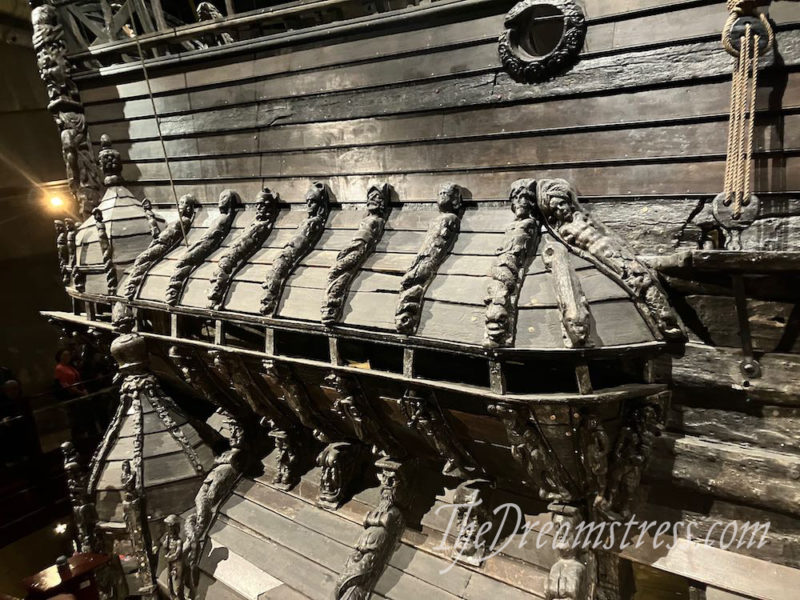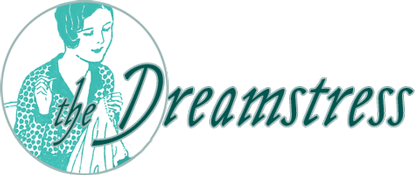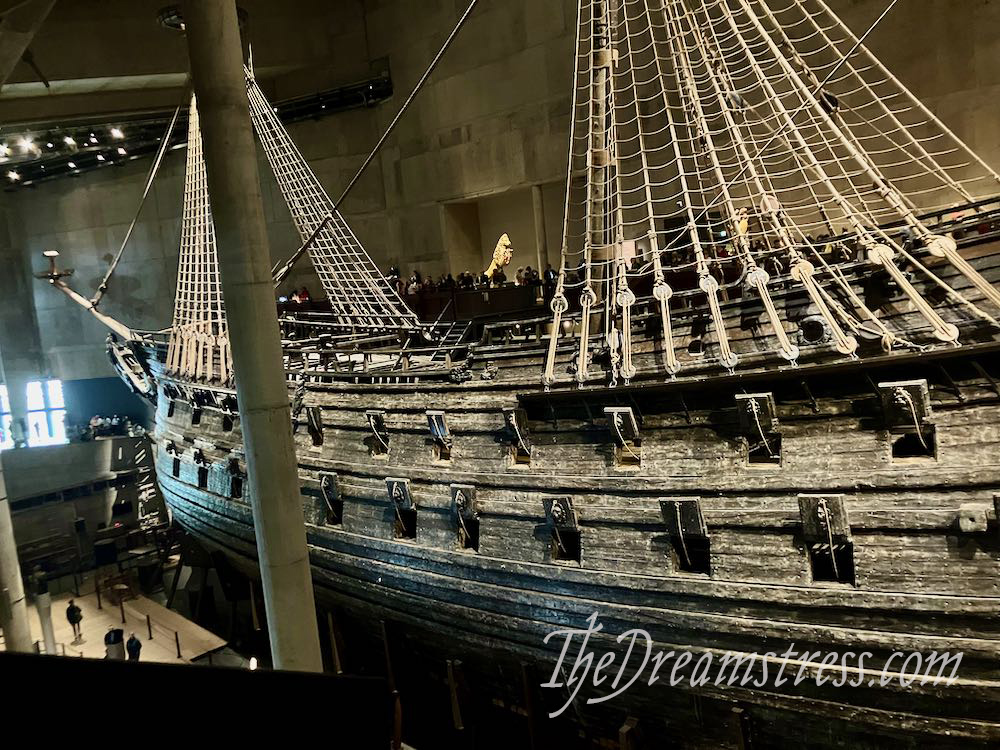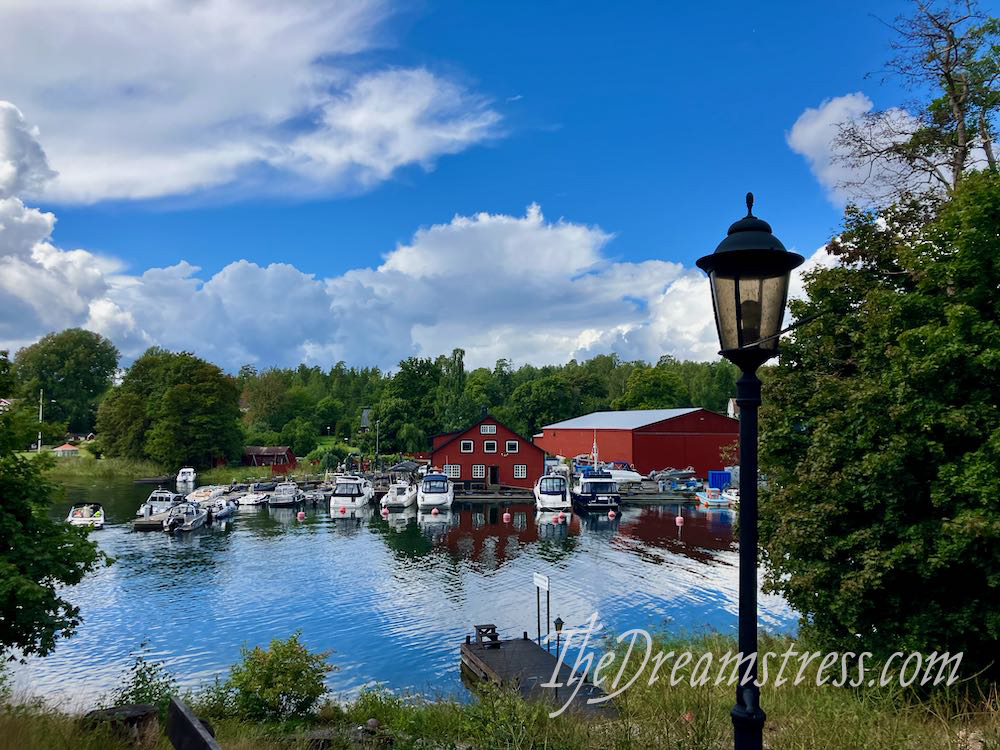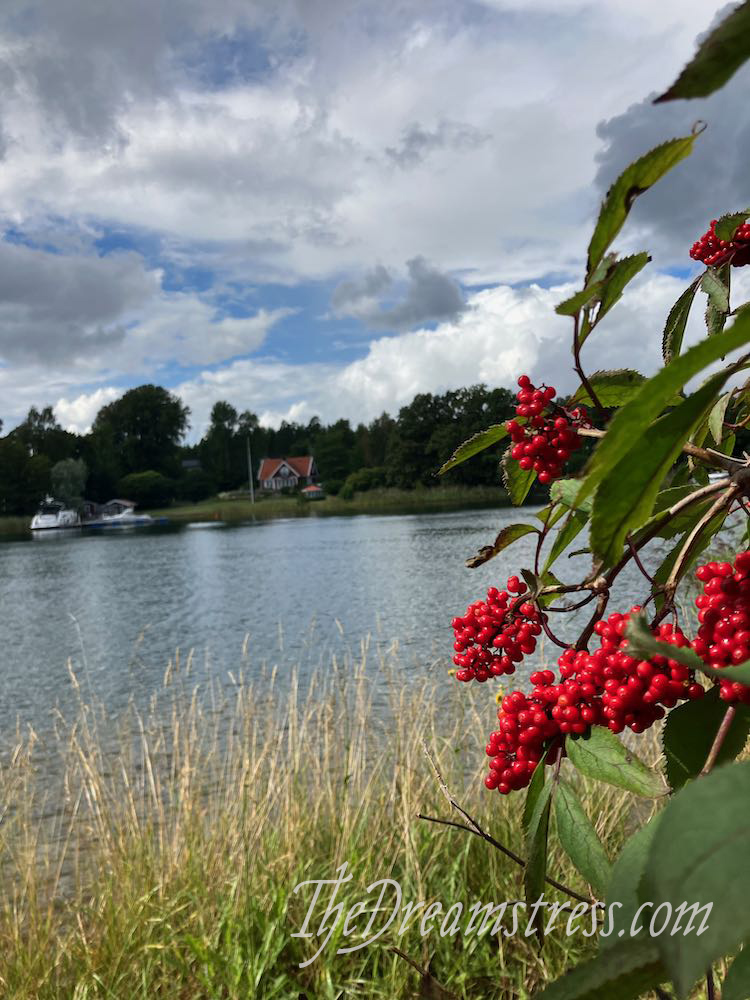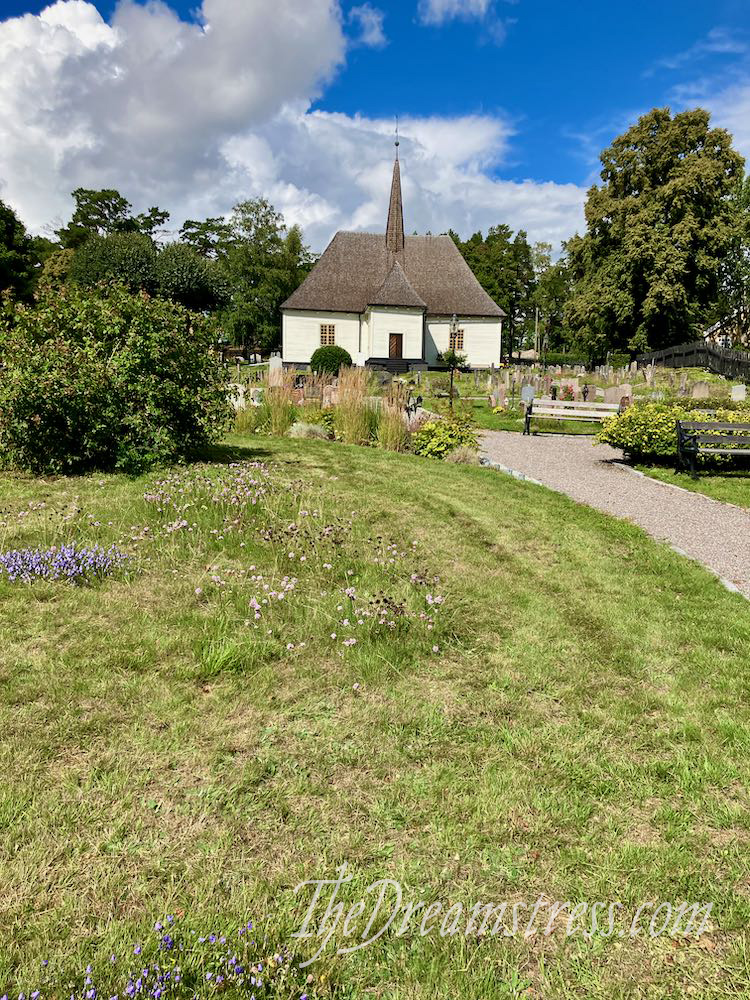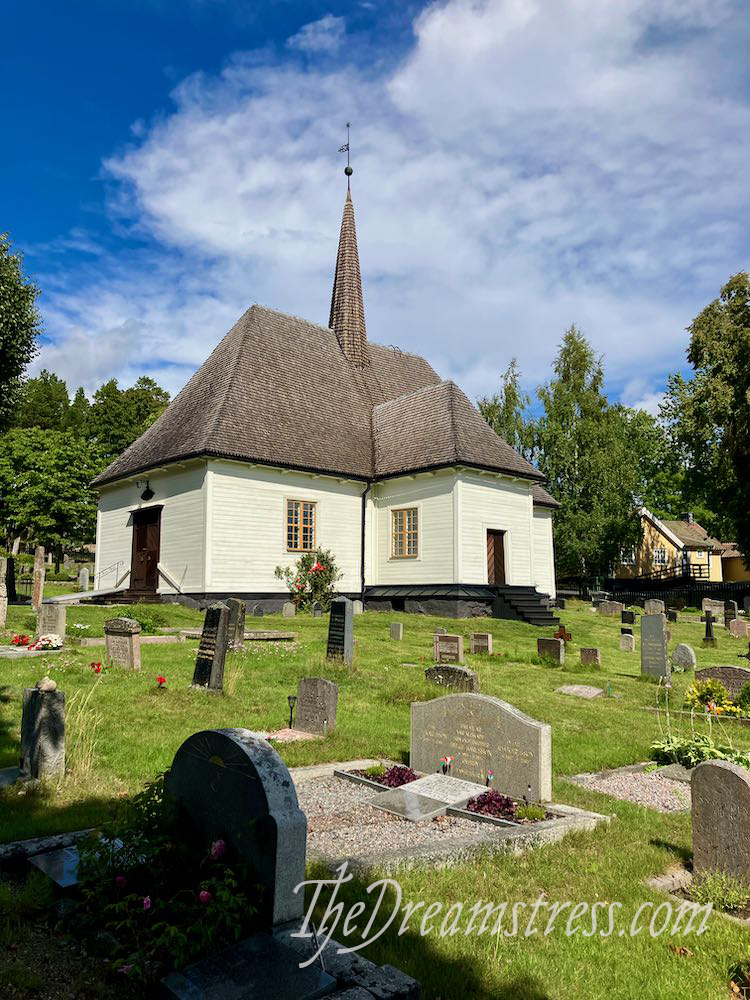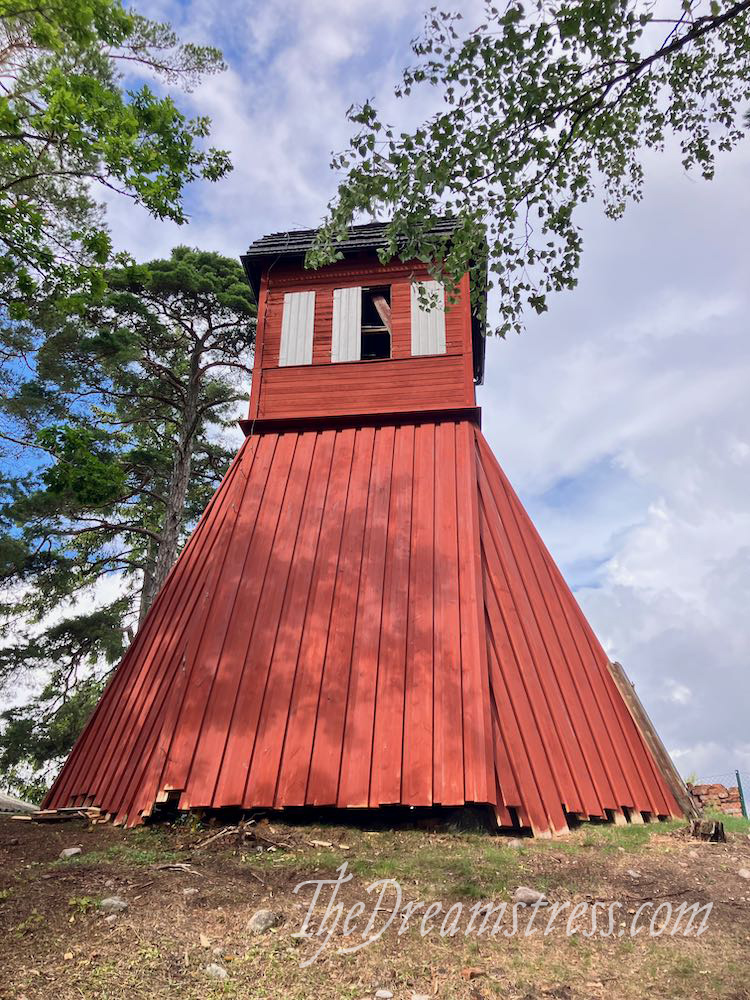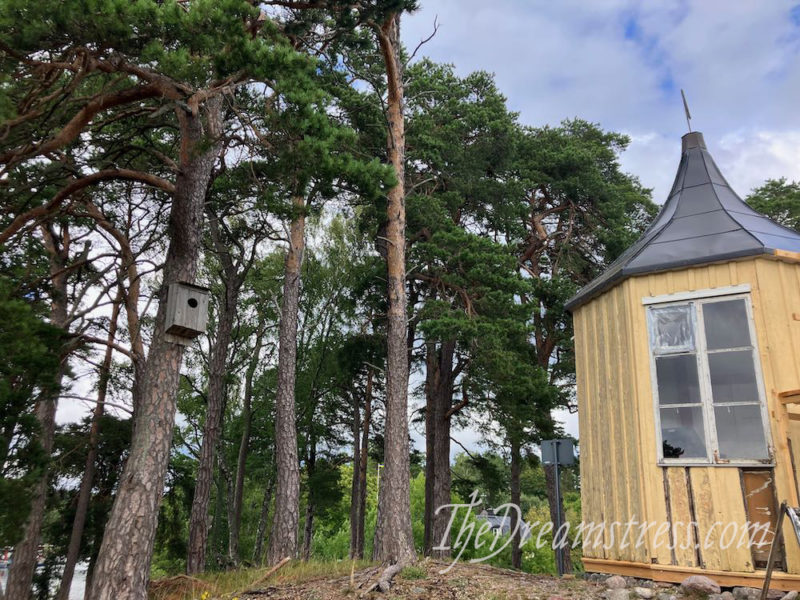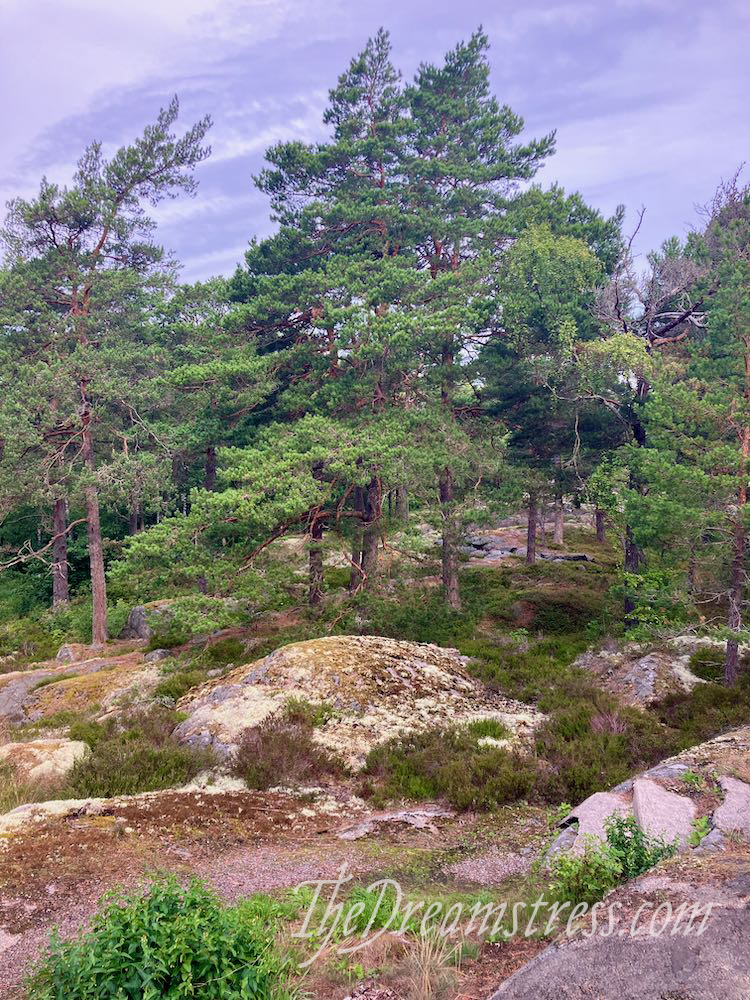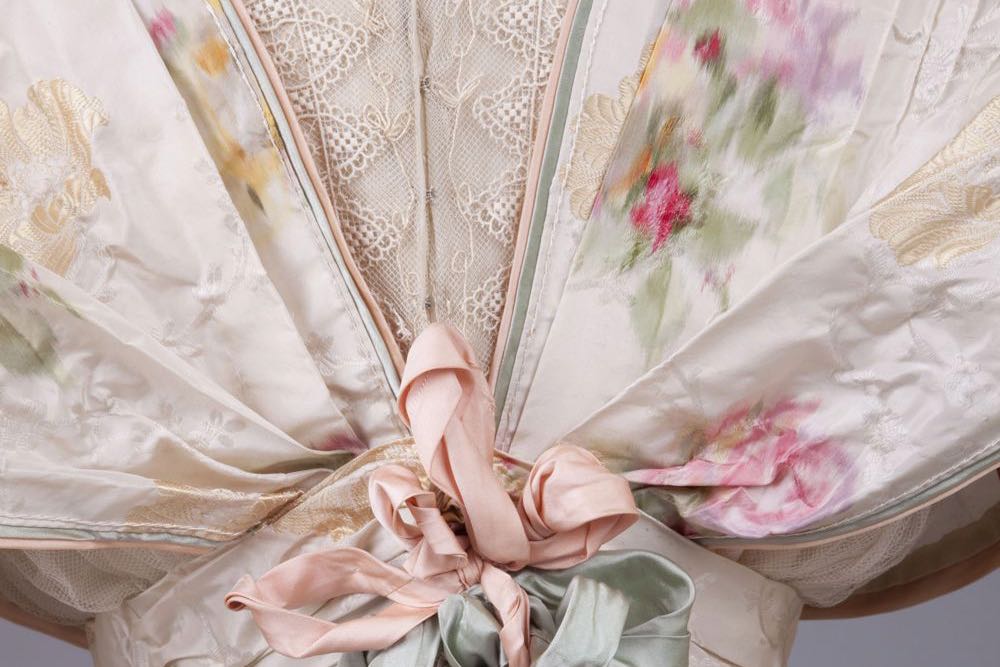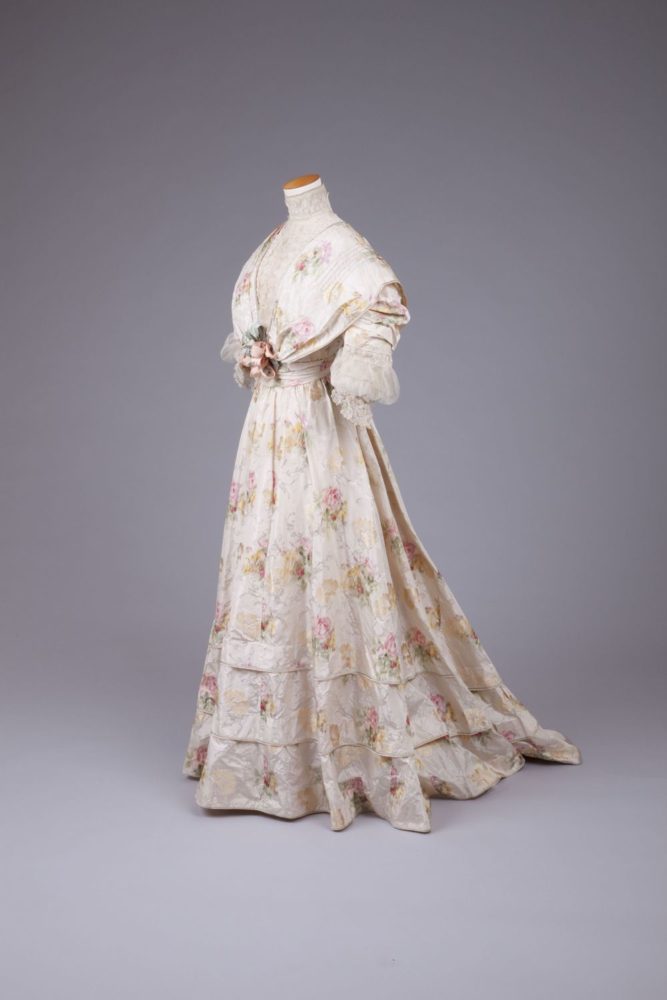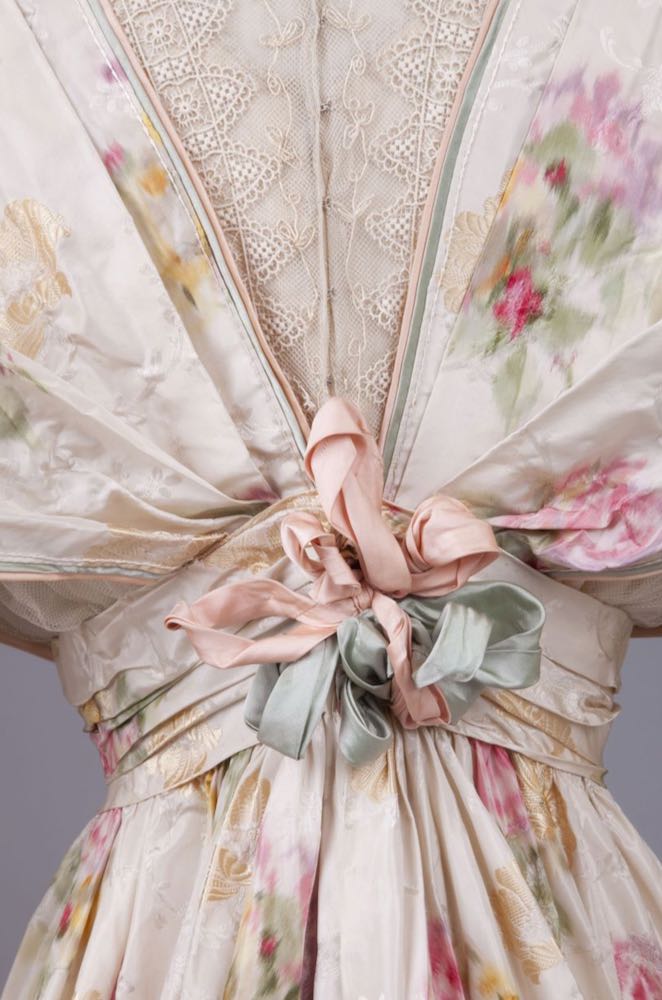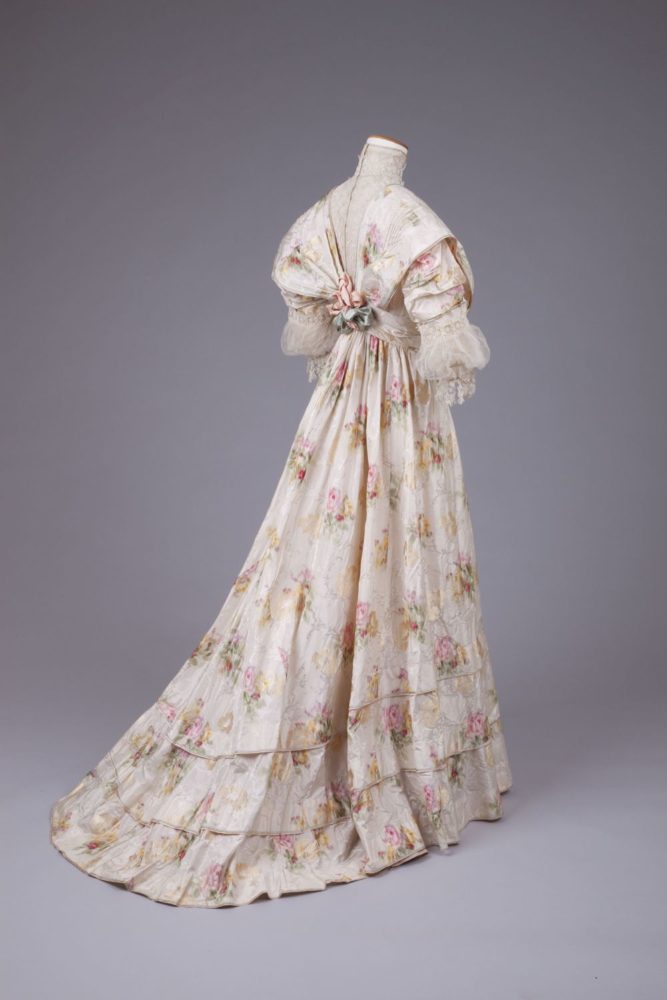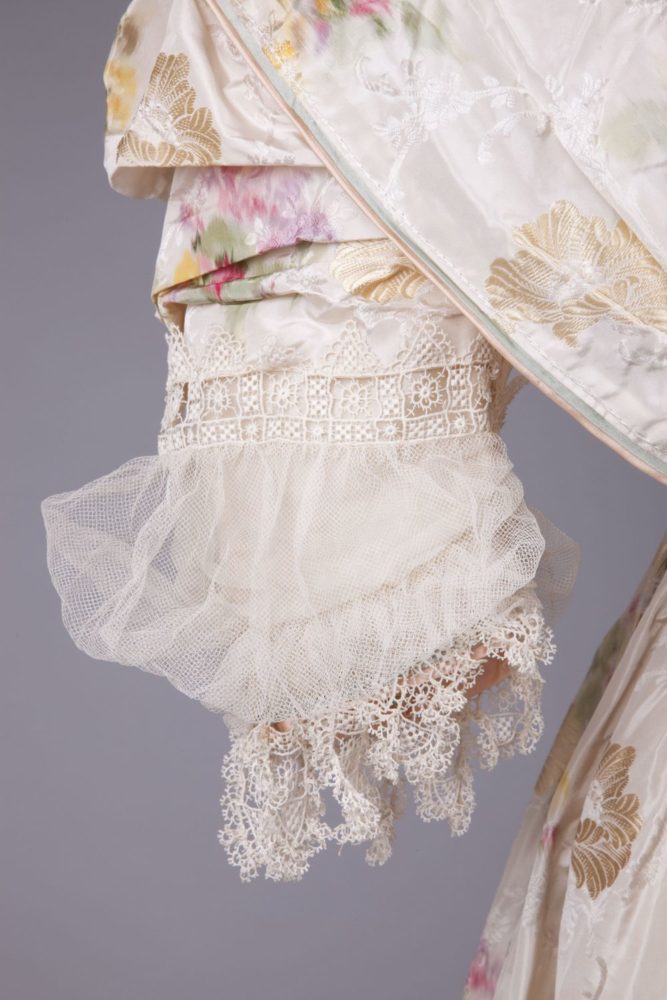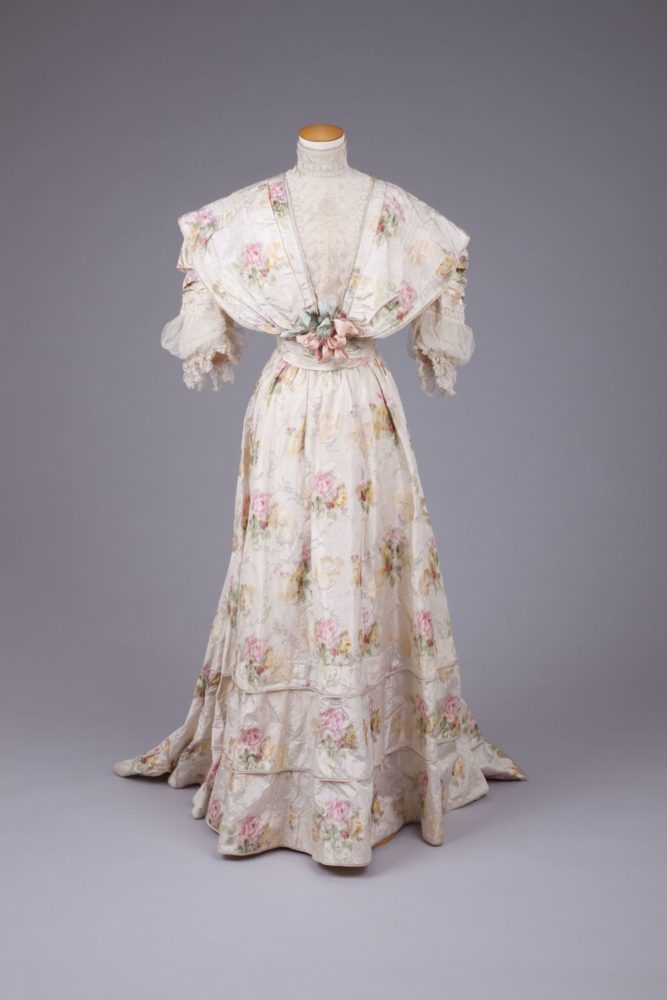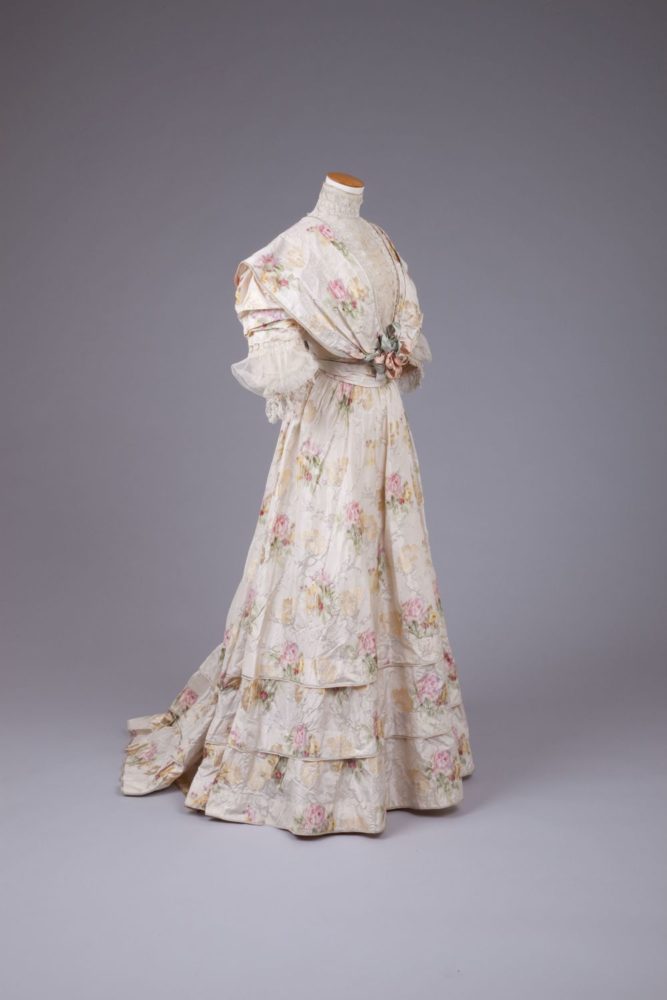There were so many amazing things to see in Stockholm, but definitely one of the highlights was my trip to the Vasamuseet: the museum that houses the only almost-intact salvaged 17th c ship in the world.
The Vasa was built between 1626-1628 under the orders of Gustavus Adolphus. It was intended to serve the Swedish navy in the wars against Poland-Lithuania, which turned Sweden into a European superpower in the 17th century.
While the wars may have been very successful for Sweden, and while Gustavus Adolphus is recognised as a military genius and “the father of modern warfare”, the Vasa was notoriously not successful, partly because of Gustavus Adolphus’ insistence that it be built in a hurry and launched on his schedule.
The idea behind the Vasa was brilliant: Gustavus Adolphus correctly predicted that naval warfare was going to transition from a strategy based on damaging a ship enough to board it (the technique made famous by pirate movies) to one based on hitting ships with enough cannons to sink or totally incapacitate them. So he ordered a ship with two layers of gun decks, and 72 new guns for them.
There were just a few not-so-small problems…
First, the shipbuilders contracted for the ship had almost certainly never built ships with two gun decks. Building a 17th c style gunship with enough ballast to balance the weight of the guns is very tricky. Then the primary shipbuilder got sick and was incapacitated shortly after the build began. Then the king began ordering a very tight build time for the ship, to compensate for ships lost in battle. Some of the ship builders were dubious, and there were murmurs that the fancy new ship was not sea worthy, but no one dared tell the king. Then some of the special guns weren’t even done in time for the launch. That may actually have been a good thing for the Swedish navy, because…
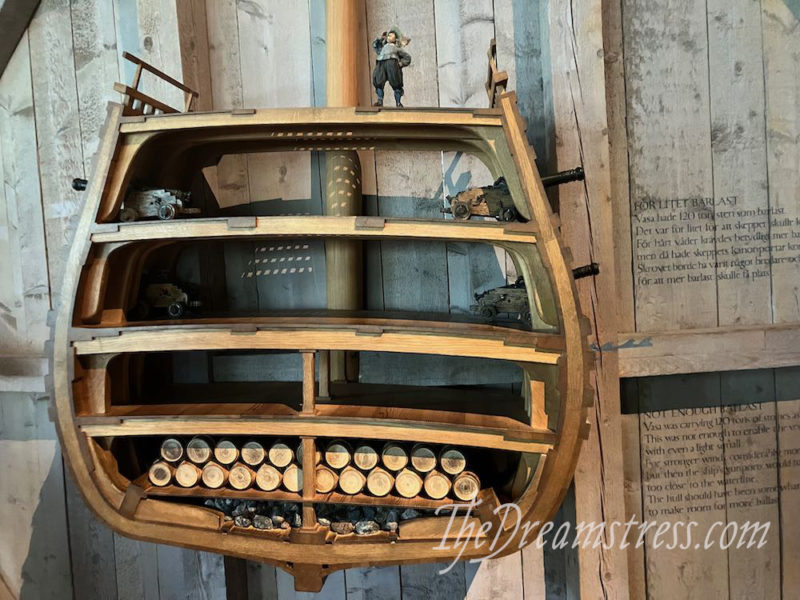
The Vasa launched with great fanfare on 10 August 1628. With a ship crowded with crew and visitors (crew were allowed to take family and friends on the initial part of the voyage) it sailed past waterfronts crammed with ordinary people, royals, and visiting dignitaries. All her gun ports were open to send out a salute as the ship left Stockholm.
Less than 1,000 meters into her voyage the first small gust of wind hit, and the top-heavy, too-narrow ship heeled sharply to port. The sailors struggled to right her, but managed to. Only a few meters further on a slightly bigger gust of wind hit, and the ship keeled over. The open gun ports flooded, and within minutes the ship sank 30 meters to the bottom of the harbour.
Boats rushed out to rescue the survivors who were clinging to the masts above water, or floating. Amazingly, of the 300ish people who were on board, only 30-50 died, most because they were trapped below deck or hit by debris.
After an initial failed attempt to raise the ship, the Vasa sat on the bottom of the harbour for over 300 years. Most of her extremely valuable guns were salvaged in the 1660s in a terrifying procedure involving men standing in primitive iron diving bells being lowered down 20-25 meters where they fished blind for cannons with huge grappling hooks. The English ambassador to Sweden described how the leather-clad ‘divers’ were pulled up after 20 minutes, blue and shivering with cold.
And then, in the 1950s, amateur archeologist Anders Franzén realised the brackish waters of the Baltic sea would have preserved the Vasa against shipworm, and set out to find it. He succeeded, and the Vasa was dug up from the seabed and raised in a process that sounds almost as terrifying as what the 17th century ‘divers’ did. Imagine crawling 20 m down a narrow tunnel in the mud UNDER a shipwreck in this to dig out more tunnel so that a cable could be passed under the ship:
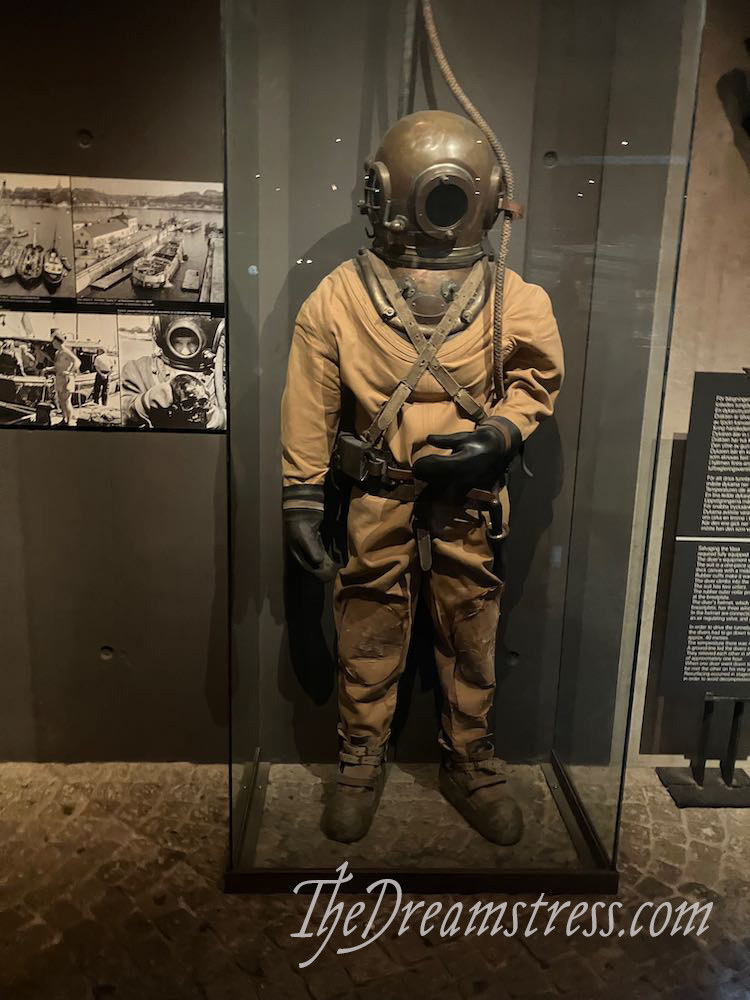
A diorama of how the Vasa was raised:
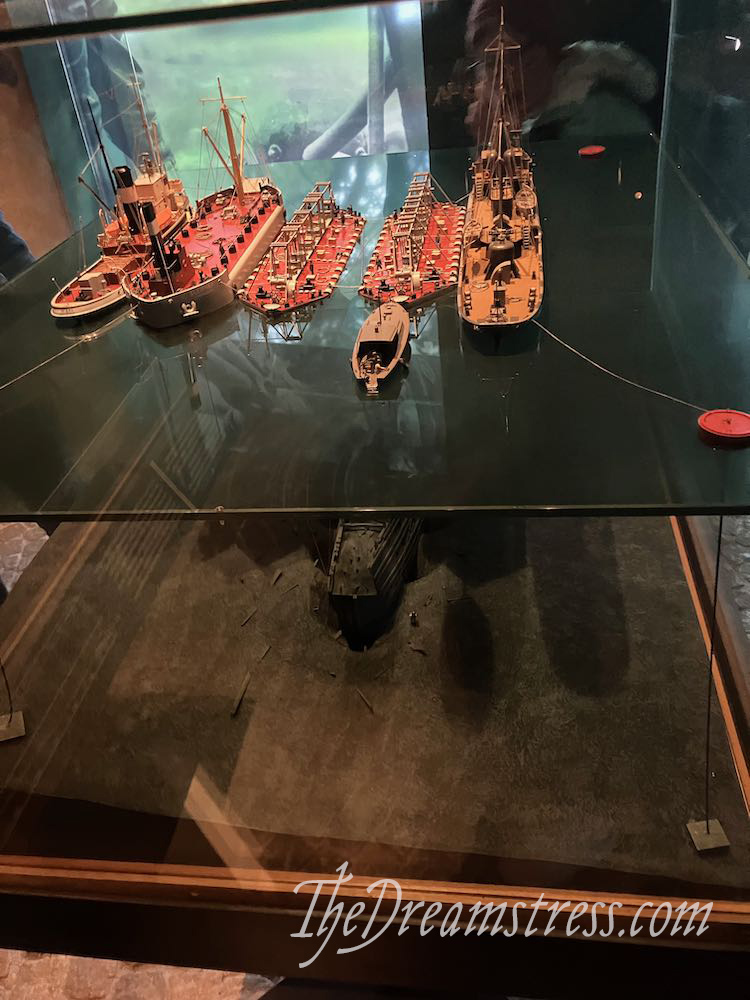
Apparently a number of wild methods were proposed for raising the Vasa, including filling it with ping pong balls and freezing it in a giant icecube. When I read about this and told Elisa she pondered “How would they do that?” And I joked “One at a time”, leading to great merriment from both of us as we’d been musing about different methods. I was fully imagining divers in the suits above carefully clutching one solitary ping pong in their hand, descending, popping it in the ship and coming back up 🤣
Anyway, on to ALL the photos of the preserved ship. They don’t begin to capture how enormous or amazing it is, but will hopefully encourage you to read more about it.
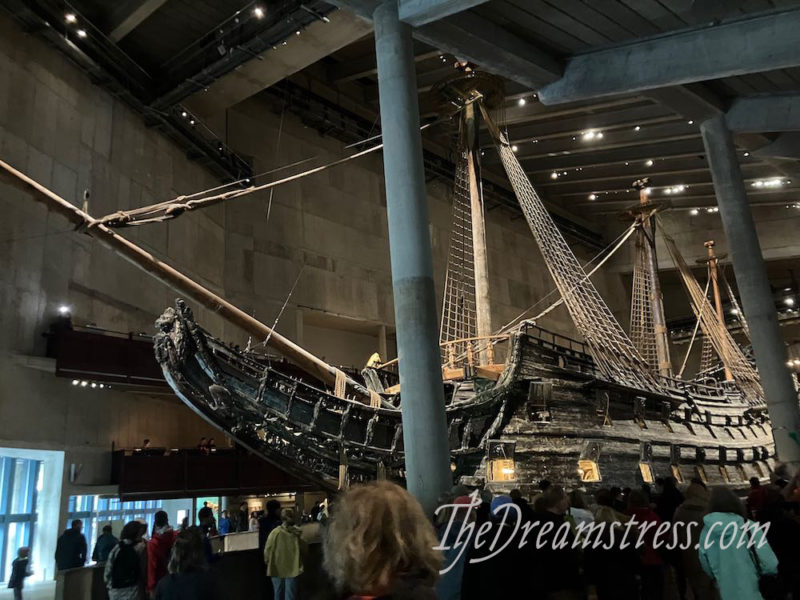
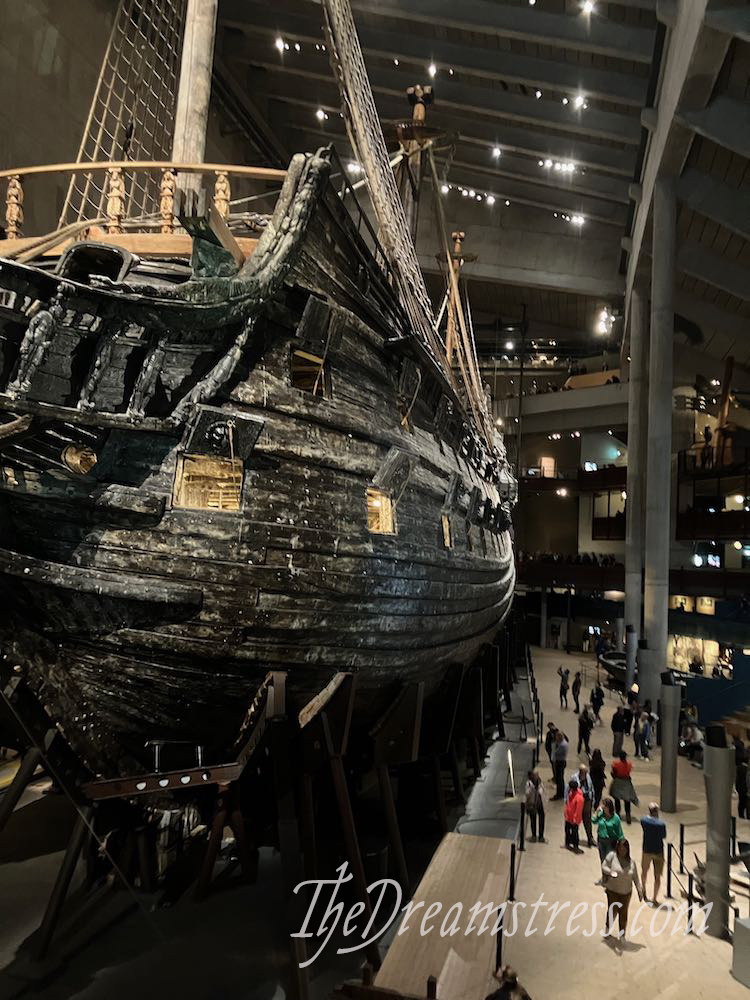
The museum was packed. Cold rainy summer in Stockholm and every tourist in town decided to go here!
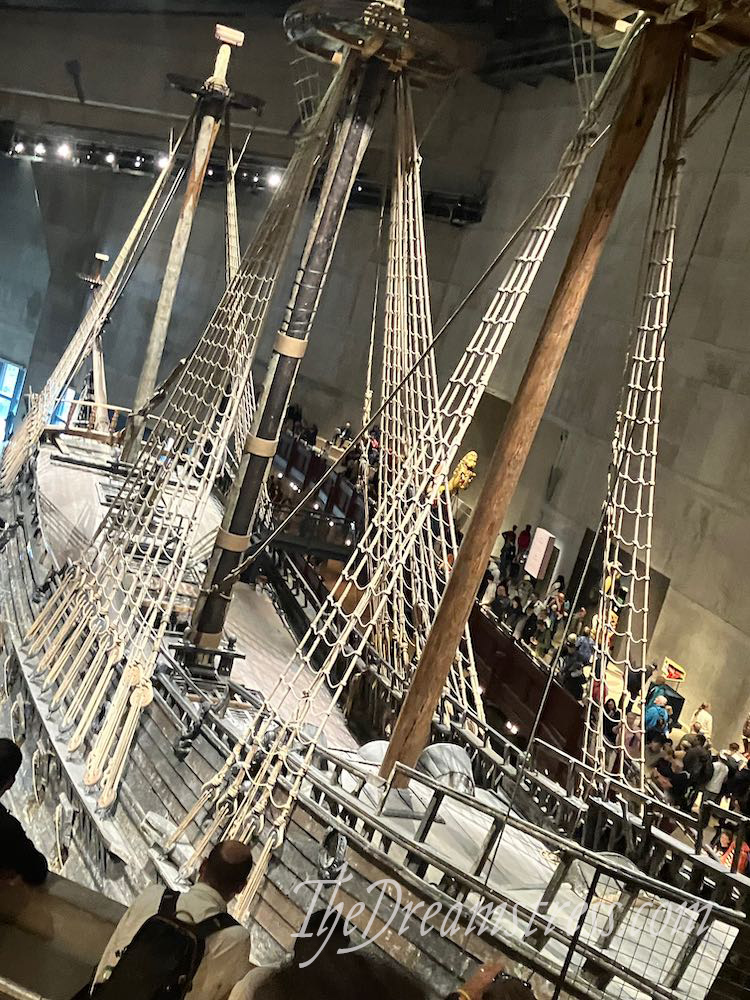
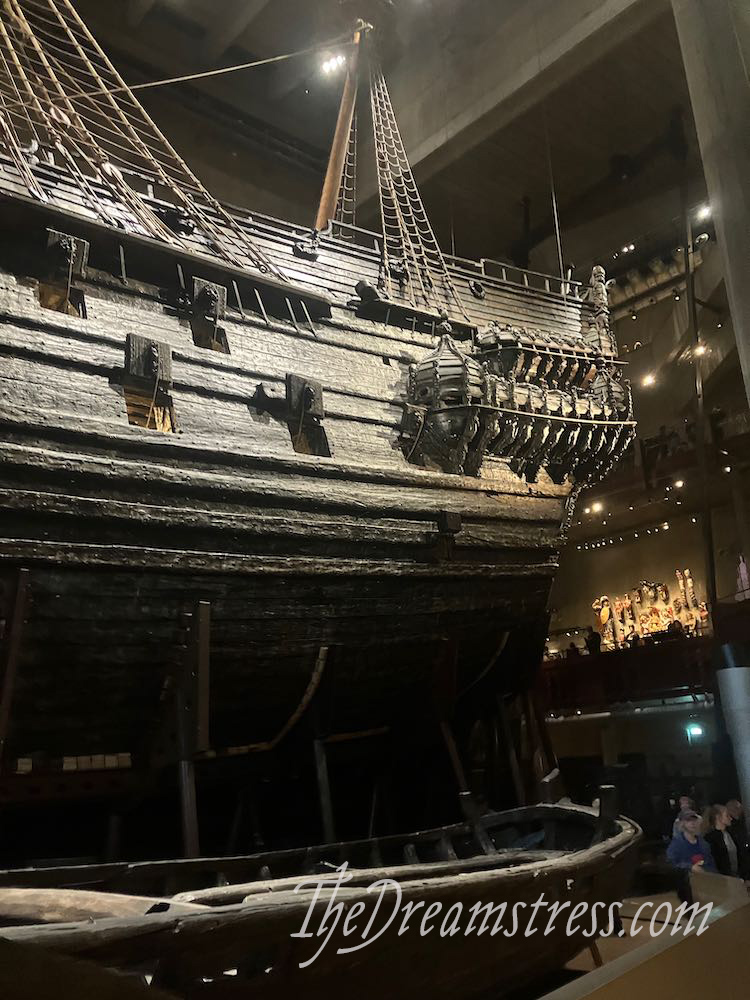
There was a 1/10 scale reproduction painted as the ship would have been. I was particularly happy that even the sails were made of strips of fabric 1/10 as wide as the narrow widths of the original sails (large fragments of which were recovered and preserved!)
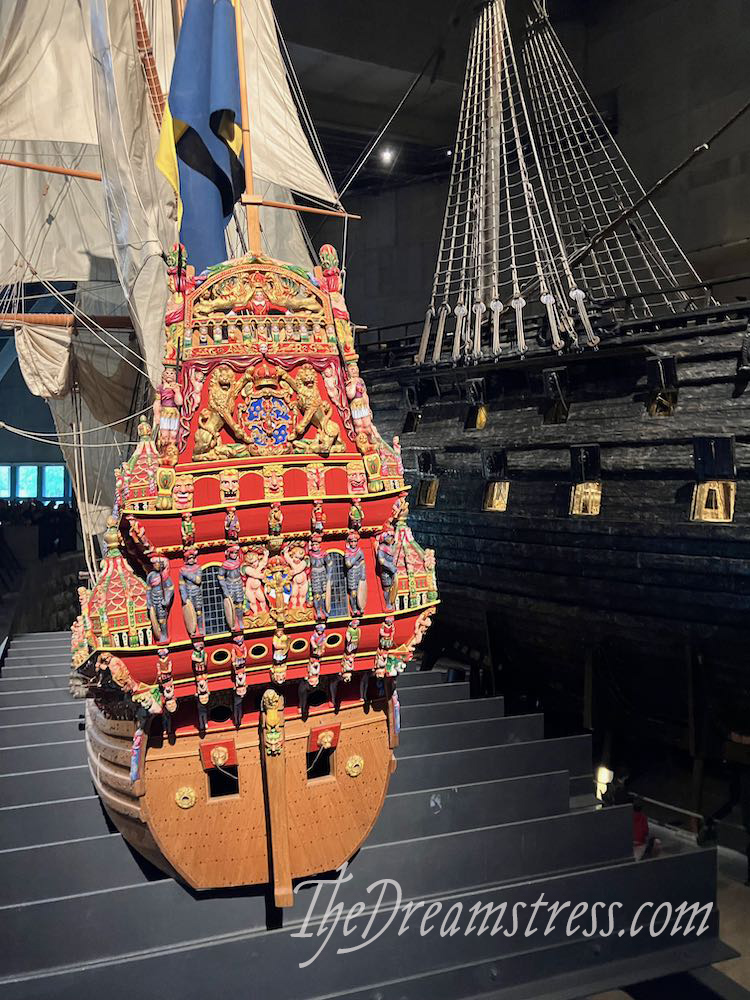
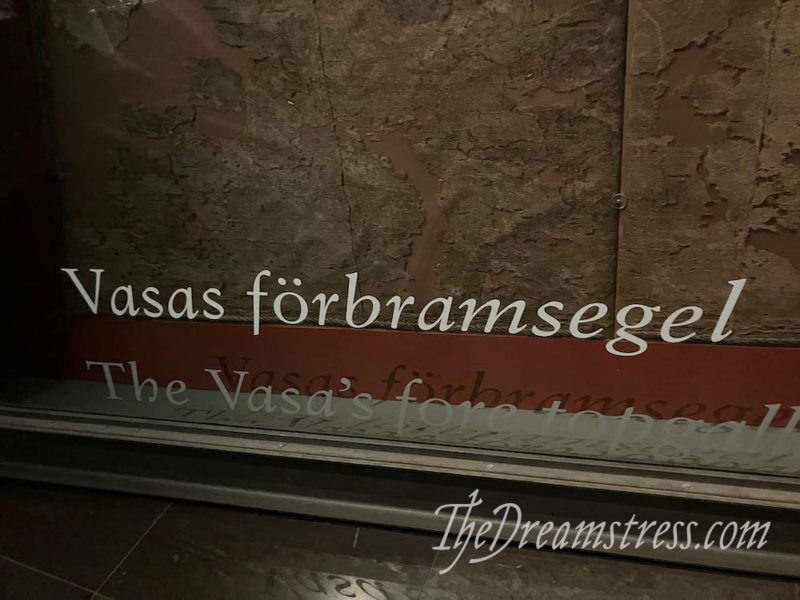
The ship was covered in amazing carvings celebrating Sweden and the King:
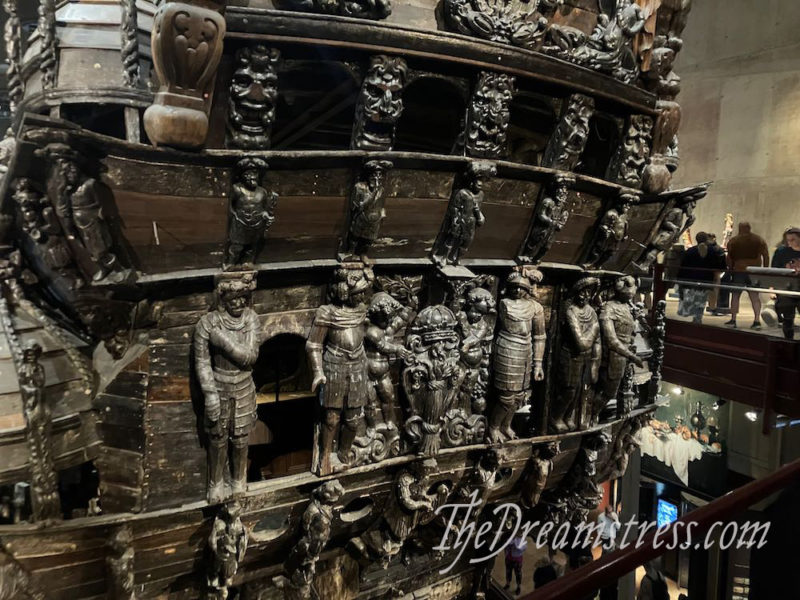
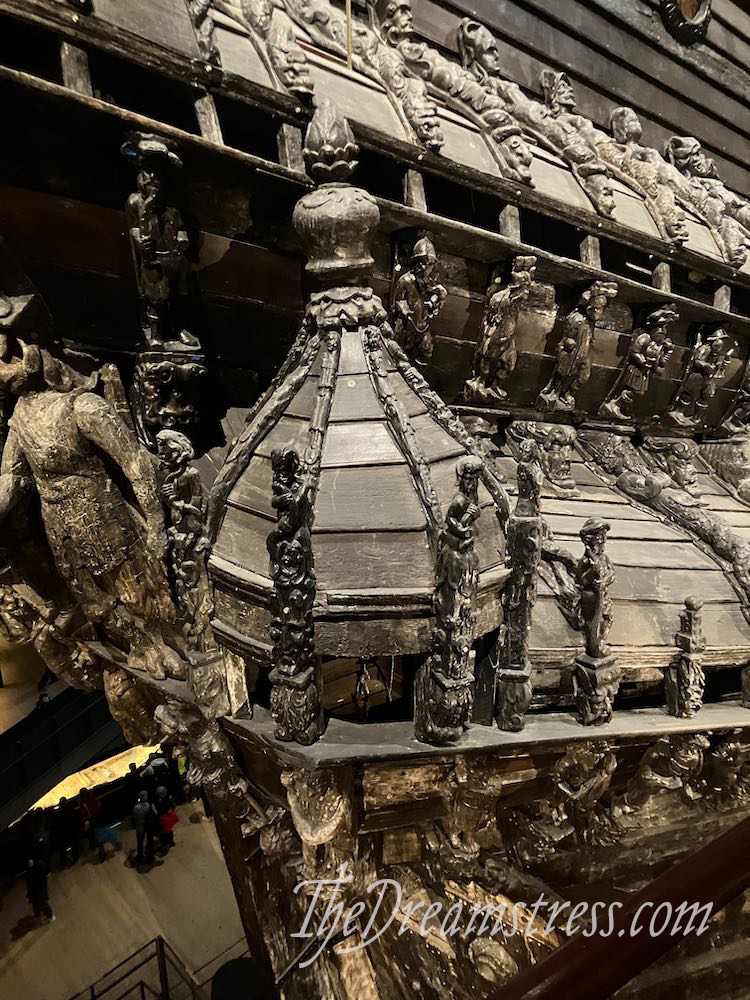
Vasa Museet Stockholm thedreamstress.com
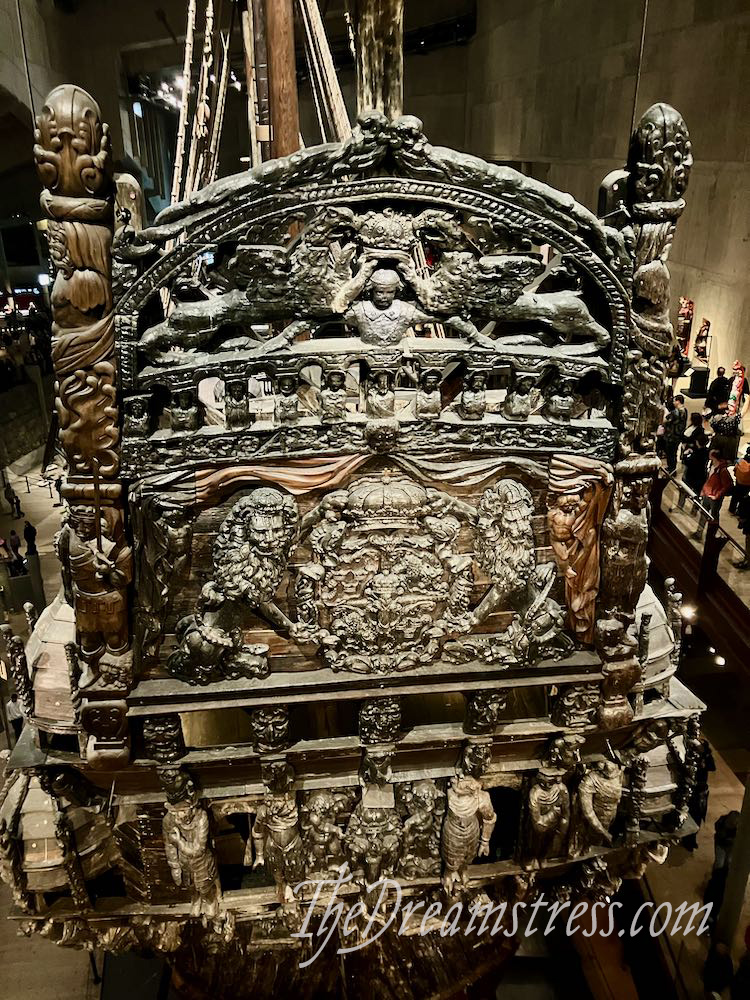
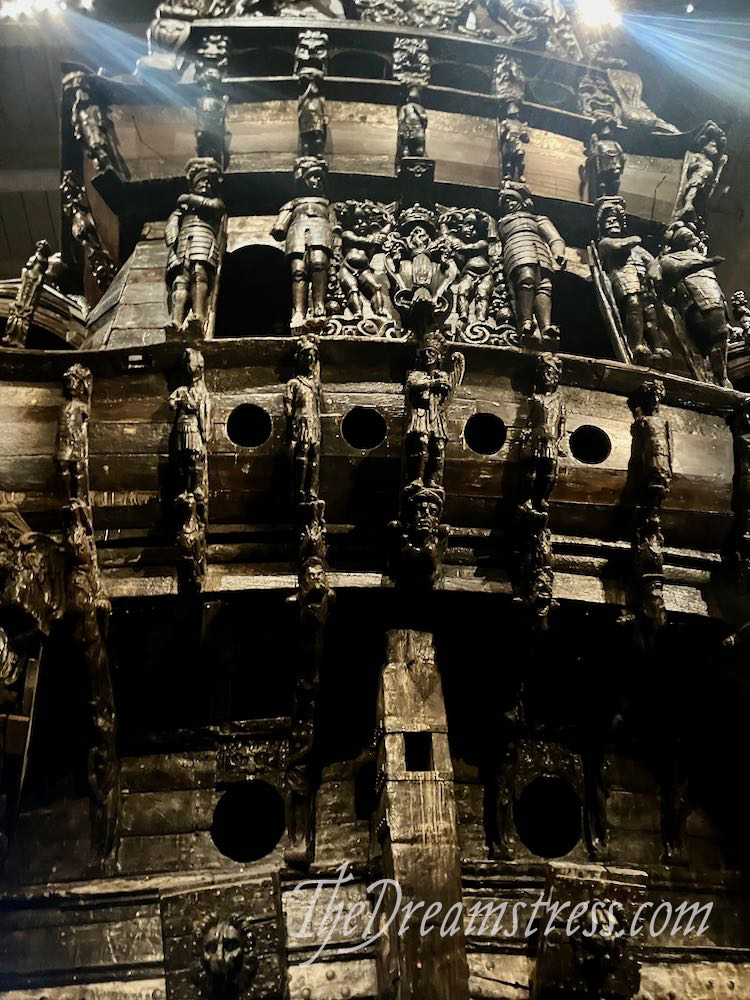
There were painted reproductions of some of the carvings:
The majestic Swedish lion, meant to fill you with awe and wonder…
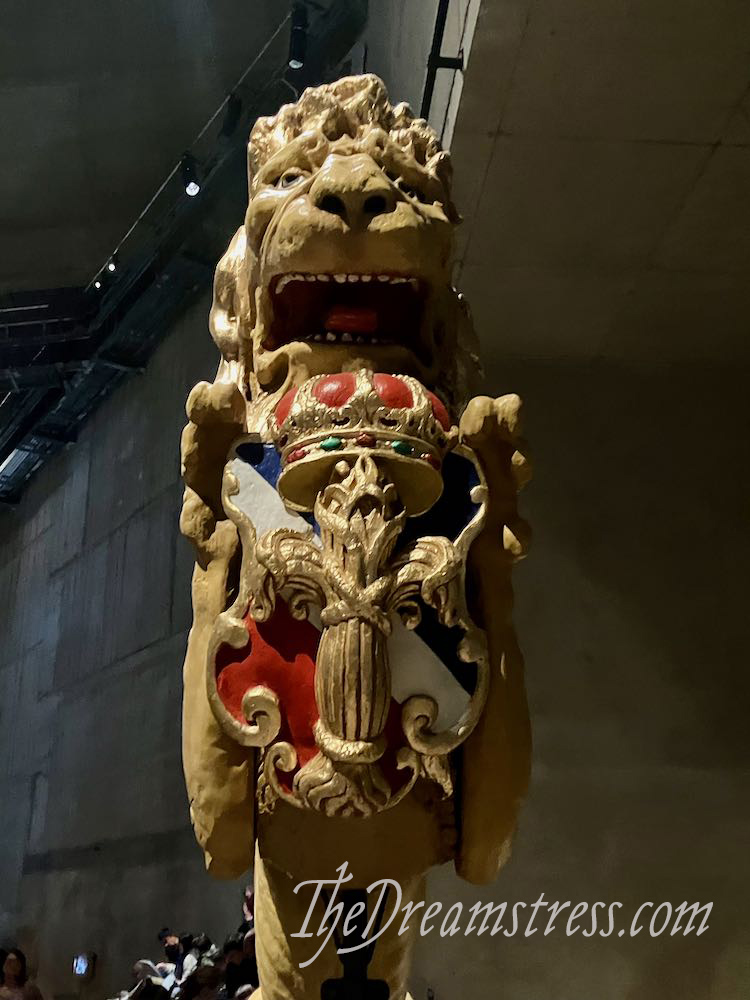
And a carving of a Polish noble crawling under a table as a form of humiliation. This was placed so you saw it using one of the two (for 200+ men!) toilets on the ship:
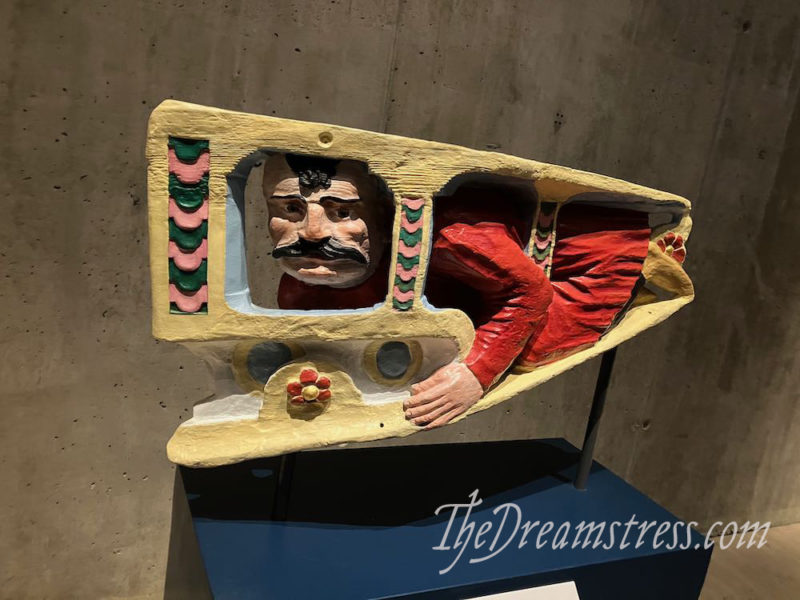
They had a wonderful display of the different pigments used for colour. They carefully analysed all the remaining paint traces to recreate the colours. How magnificent she would have looked on the Baltic Sea, sails full, flags fluttering!
There were also displays of all the objects found with the ship, including clothes and fabric remnants:
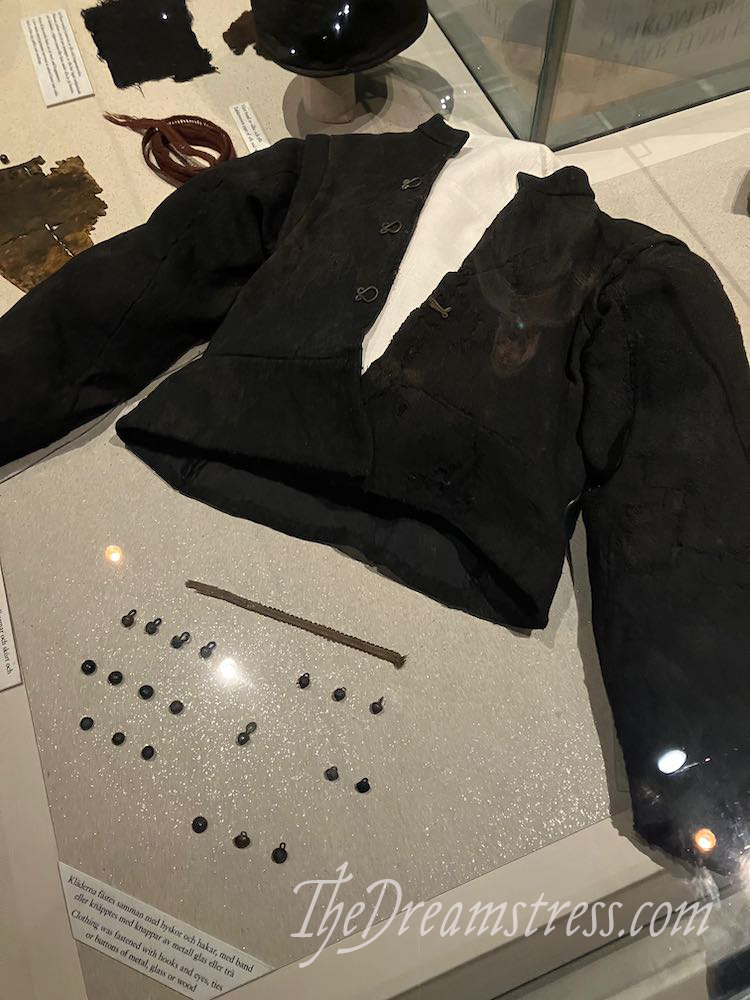
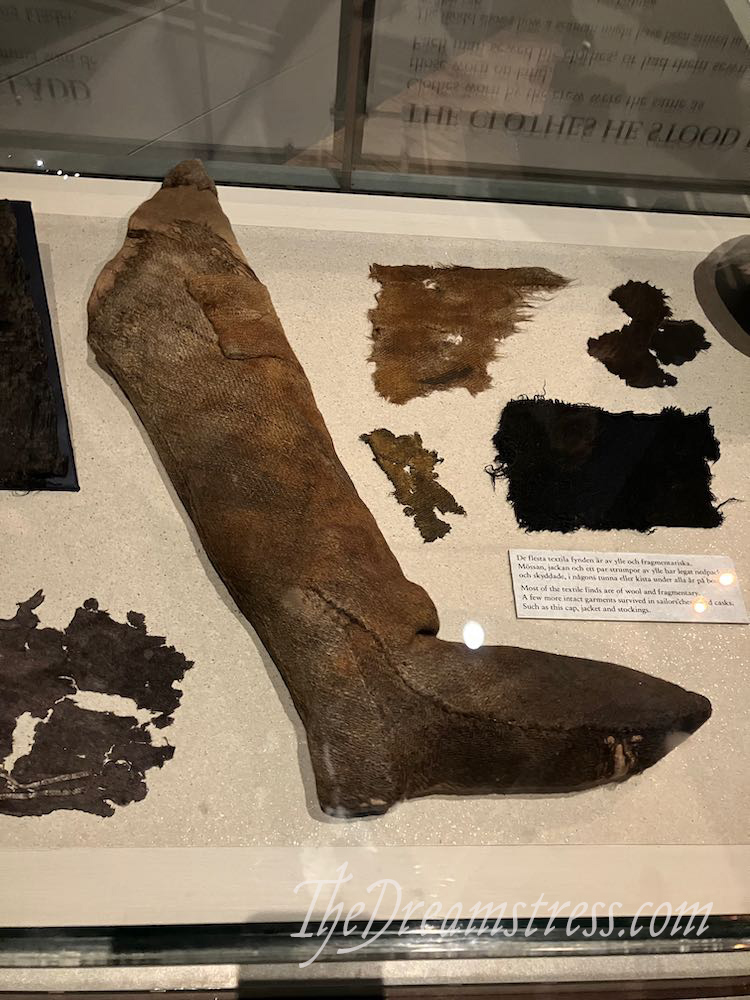
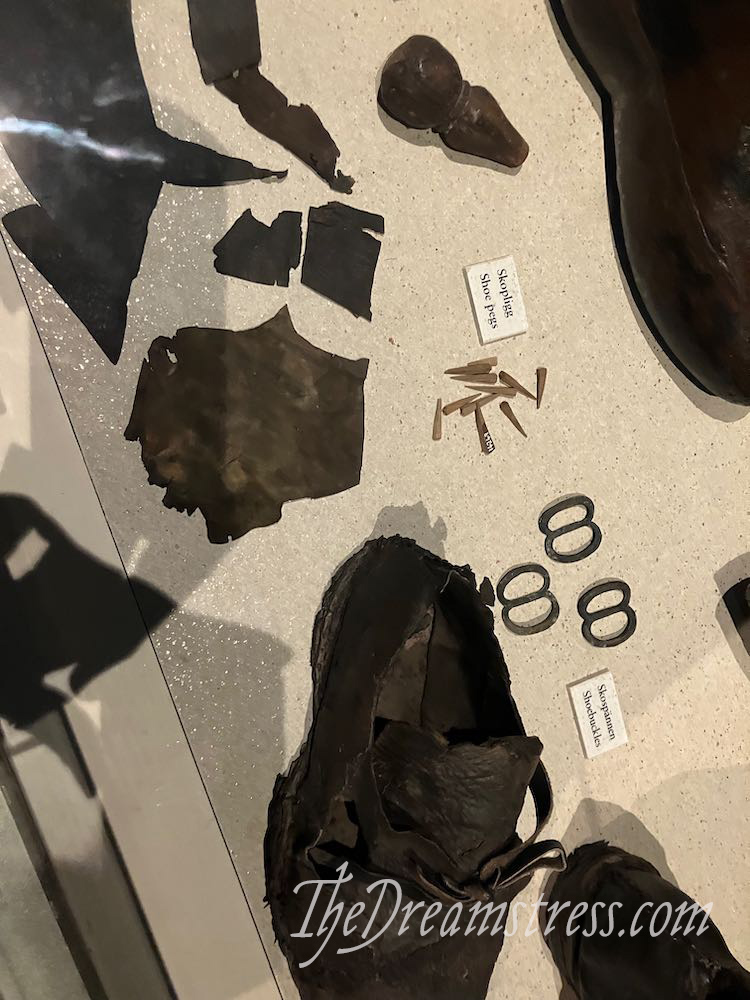
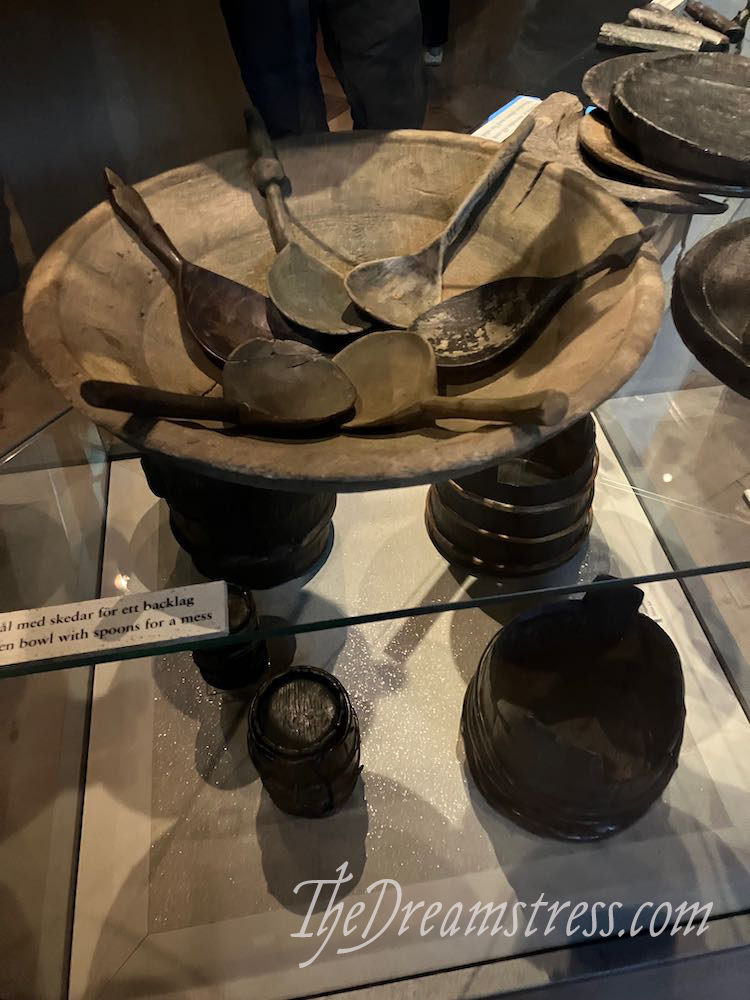
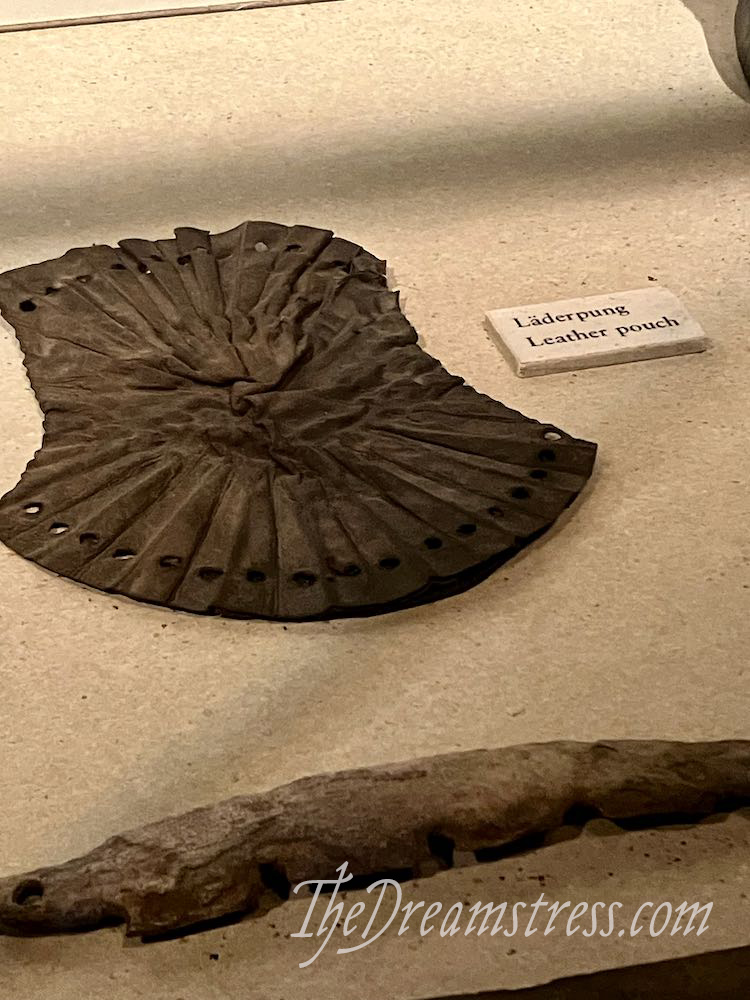
There was one thing about the museum that really threw me. It’s 6 stories, and you start out in the middle, on the second or third level. We went up first, and finished up on the bottom level. The bottom level had a display about how the ship was preserved, and how they are continually researching how to keep it stable, and also an exhibition ‘Face to Face’ about the people who died when the Vasa sank, and what we know about them from their remains.
This was fascinating. They have been able to reconstruct what they looked like, and sometimes even their exact clothes (and if not, they based them off other garments found with the Vasa).
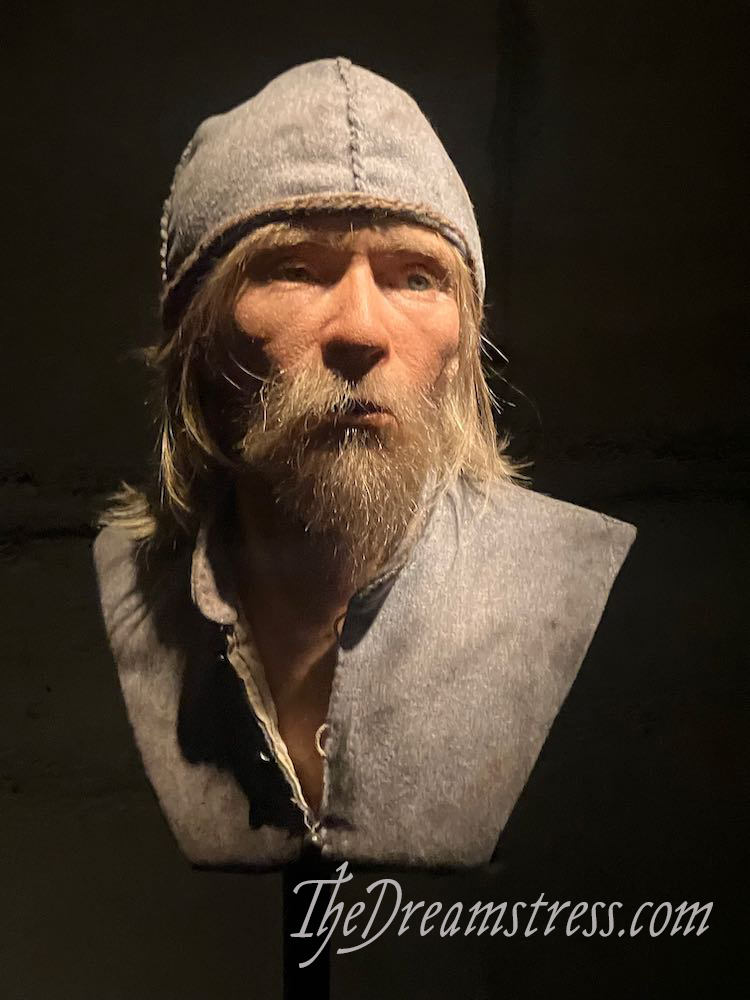
They even determine that three of the remains found near each other all had unusual genetic anomalies (skulls not fully fused as adults, and a bulge at the base of the skull) suggesting they were related – perhaps a brother and his two sisters. It gave a wonderful human dimension to the ship.
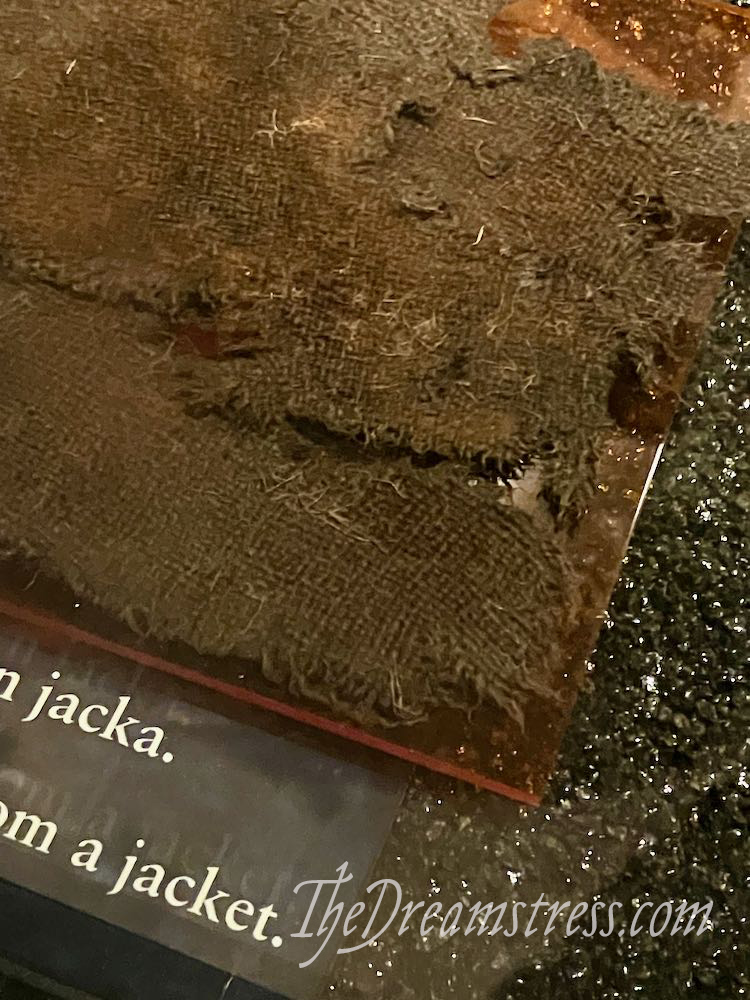
However, they also had their actual remains on display. 10 skeletons, laid out in cases.
From a NZ/Hawai’i perspective this is just unthinkable. You don’t display remains.
I did not expect it at all, was reading with interest, and then turned around and…skeleton. If there were warnings, I did not see them. I immediately turned back around, and kept my back to that case for the whole exhibition. I was so startled I had to google afterwards to be sure of what I’d seen.
It’s not a case of squeamishness or fear. It’s simply that for me looking at the remains of people who would have wanted, based on their own culture and religion, to be buried in a specific way, is culturally unacceptable. I couldn’t bring myself to do it. I completely understand that Sweden is not NZ or Hawai’i, but it still threw me.
So, utterly fascinating and wonderful museum featuring an amazing, iconic piece of history and archeology that I’ve read so much about over the years. And an unexpected lesson in cultural and museumology differences.
